
The liver is a very important organ in our body for detoxification. If people often experience anger and depression, it can harm the liver. This leads to a condition known as “Liver Qi Stagnation” (gan yu qi zhi), which is a term used in Traditional Chinese Medicine (TCM). Today, we will explore what Liver Qi Stagnation is and what symptoms it presents.
Liver Qi Stagnation primarily refers to the abnormal function of the liver’s ability to regulate and disperse Qi, leading to a state of Qi stagnation due to delayed release.
In TCM, it is believed that “the liver is a strong organ that prefers smoothness and dislikes depression; in terms of emotions, it is associated with anger.” This expresses that the liver is a strong and impatient organ that thrives on calm and gentle emotions, and dislikes anger and depression.
How to determine if you have Liver Qi Stagnation

In TCM, it is said that all diseases arise from Qi. Therefore, only by resolving the issue of Liver Qi stagnation can women reduce their illnesses or even avoid them altogether.
1Causes of Liver Qi Stagnation
Several factors can lead to Liver Qi stagnation:
Family disharmony: Frequent arguments between spouses or tense relationships with in-laws can lead to discomfort in the liver.
Social pressure: For example, older unmarried women often face pressure from parents, relatives, and colleagues regarding marriage, compounded by negative societal views on their situation, leading to significant stress and discomfort in the liver.
Work pressure: In modern workplaces, there is no gender preference; women face unprecedented stress, especially white-collar workers who are pulled between family and career, leading to widespread liver discomfort.
Poor self-regulation: Many women struggle to cope with issues, tend to dwell on negative aspects of life and work, and lack the ability to self-soothe, which often results in Liver Qi stagnation.

2Manifestations of Liver Qi Stagnation
One manifestation is Qi stagnation, which means that Qi is trapped within the body, leading to feelings of frustration and oppression, commonly described as feeling “stifled” or “angry inside.” This is a typical sign of Liver Qi stagnation. Prolonged Qi stagnation can lead to heat accumulation, resulting in excessive liver fire and irritability. Some individuals may sigh frequently, feel unhappy, and risk developing serious health issues due to self-neglect; others may become impulsive and easily angered, causing distress to themselves and others.
Many women report that they are aware of their poor health and wish to take blood-nourishing supplements, but they often experience mouth ulcers or insomnia after taking them, leading to restlessness. Some believe this is due to “deficiency not accepting nourishment,” but in reality, these issues are often caused by liver fire; if the liver fire is blocked, how can nourishment be absorbed?
The dangers of Liver Qi stagnation are significant and beyond imagination; it can lead to blood stasis, weak temper, dampness accumulation, and even yin deficiency with yang excess… In short, the “crimes” of Liver Qi stagnation are numerous.
Today, many people suffer from Liver Qi stagnation, especially women who juggle family responsibilities and careers, raising and educating children while also caring for elderly parents, making it difficult to avoid liver discomfort.
How to determine if you have Liver Qi stagnation

To diagnose, one must look for evidence, and self-diagnosis is no different. The most critical evidence for Liver Qi stagnation can be found on the tongue. Generally, a normal tongue is oval-shaped, while a person with Liver Qi stagnation has a pointed tongue, often with a red tip and edges—this is a key clue for diagnosing Liver Qi stagnation.
Of course, to confirm Liver Qi stagnation, you will need the following “evidence”:
Bitter mouth: Many women report a bitter taste in their mouth, especially in the morning.
Dry throat: A feeling of dryness in the mouth and throat, as if there is no saliva, although some may still have visible saliva on their tongue.
Feeling of obstruction in the throat: A sensation of something stuck in the throat, like a hawthorn seed, which cannot be coughed up or swallowed, known as “plum pit Qi.”
Dizziness: Some women frequently experience dizziness, either all day or in sudden episodes, and some may also have headaches.
Poor appetite: “Liver wood counteracts spleen earth,” so Liver Qi stagnation can lead to various spleen and stomach issues, such as lack of appetite, bloating, and stomach pain.
Feeling hot and cold: Feeling hot when dressed and cold when undressed, or feeling hot in a warm room and cold outside.
Easy irritability: Individuals with Liver Qi stagnation often feel irritable and are prone to anger and frustration.
Frequent nausea: Due to “Liver wood counteracting spleen earth,” leading to upward stomach Qi, causing belching, acid reflux, or even vomiting.
Chest tightness: A feeling of tightness in the chest, sometimes diagnosed as heart issues. However, individuals with heart problems should first address Liver Qi stagnation if their tongue is pointed.
Rib pain: A persistent feeling of pain in the ribs.
Insomnia with vivid dreams: Insomnia can stem from two main causes: blood deficiency or Liver Qi stagnation. Frequent dreaming is also a sign of Liver Qi stagnation, as such individuals often dream upon falling asleep.
Low mood: Feelings of sadness, sighing, and sensitivity to emotions.
Cold hands and feet: Many know that cold extremities can result from yang deficiency, blood deficiency, or blood stasis, but few recognize that Liver Qi stagnation can also cause cold hands and feet. If cold extremities are present along with the aforementioned symptoms, consider the possibility of Liver Qi stagnation.
All of the above are criteria for diagnosing Liver Qi stagnation. If at least one or two symptoms match, and the tongue is pointed, it is likely that you have Liver Qi stagnation. In fact, even without these symptoms, women can often sense their own emotional state, whether they have experienced distress, anger, or significant work pressure… These are things that one knows best, so the true diagnostic standard for Liver Qi stagnation lies within oneself.
Four TCM Formulas to Improve Liver Qi Stagnation
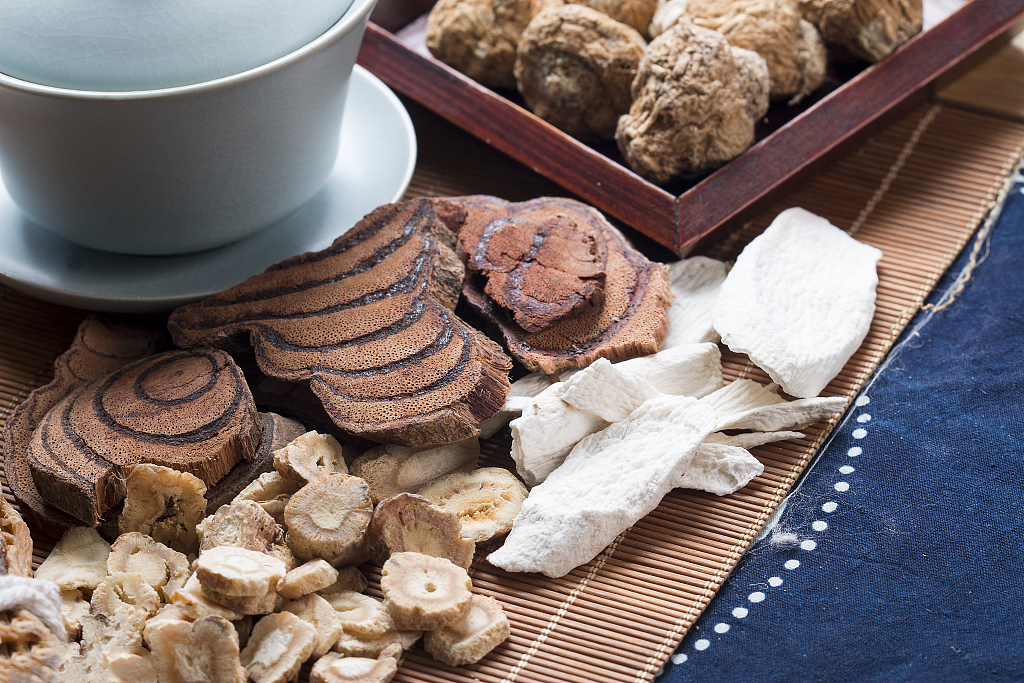
Women with Liver Qi stagnation should undergo TCM diagnosis and take herbal remedies. Here are some recommended TCM formulas.
1Xiao Yao Wan (Free and Easy Wanderer Pill)
The main ingredients are Chai Hu (Bupleurum), Bai Shao (White Peony), Bo He (Peppermint), Dang Gui (Angelica), Chao Bai Zhu (Fried Atractylodes), Zhi Gan Cao (Honey-fried Licorice), Fu Ling (Poria), and Sheng Jiang (Fresh Ginger). Chai Hu and Bo He help regulate Qi, while Dang Gui and Bai Shao nourish blood and regulate menstruation.
This formula helps soothe the liver, strengthen the spleen, and alleviate menstrual pain, treating symptoms such as breast swelling, lack of appetite, and emotional discomfort due to liver and spleen deficiency.
2Shu Gan Wan (Liver Soothing Pill)
This TCM formula is effective for Liver Qi stagnation, primarily composed of Yan Hu Suo (Corydalis), Chuan Lian Zi (Sichuan Chinaberry), Pian Jiang Huang (Turmeric), Chen Xiang (Agarwood), Mu Xiang (Costus), Sha Ren (Amomum), Zhi Qiao (Bitter Orange), Dou Kou Ren (Cardamom), Bai Shao (White Peony), Fu Ling (Poria), Hou Po (Magnolia Bark), Chen Pi (Dried Tangerine Peel), and Zhu Sha (Cinnabar).
Main functions: Soothe the liver and stomach, regulate Qi, and relieve pain. It can alleviate stomach pain, chest tightness, and belching caused by Liver Qi stagnation.

3Chai Hu Shu Gan Wan (Bupleurum Liver Soothing Pill)
The main ingredients include Xiang Fu (Cyperus), Chai Hu (Bupleurum), Zhi Qiao (Bitter Orange, fried), Chuan Xiong (Szechuan Lovage), Shao Yao (Peony), Chen Pi (Dried Tangerine Peel, vinegar-fried), and Gan Cao (Licorice, honey-fried). This formula helps soothe the liver, regulate Qi, and invigorate blood circulation, suitable for patients with chest and rib pain, irritability, and restlessness due to Liver Qi stagnation.
4Dan Zhi Xiao Yao Wan (Peony and Gardenia Free and Easy Wanderer Pill)
This formula is based on Xiao Yao Wan with the addition of Mu Dan Pi (Moutan Root) and Zhi Zi (Gardenia) to clear liver fire, regulate menstruation, and soothe the liver. It is suitable for women with symptoms of liver fire, irritability, chest and rib pain, dry mouth, lack of appetite, hot flashes, early menstruation, and breast swelling.
In addition to medication, dietary adjustments can also be an effective way to regulate Liver Qi. When cooking, consider adding herbs that help regulate liver Qi, such as Dang Shen (Codonopsis), Shan Zha (Hawthorn), Da Zao (Jujube), Fo Shou (Buddha’s Hand), Huang Qi (Astragalus), and Gou Qi Zi (Goji Berries).
Additionally, vegetables and fruits like celery, bananas, radishes, and citrus can help clear liver fire and cool the liver, making them good choices for regular consumption.
Cupping and Moxibustion for Liver Qi Stagnation
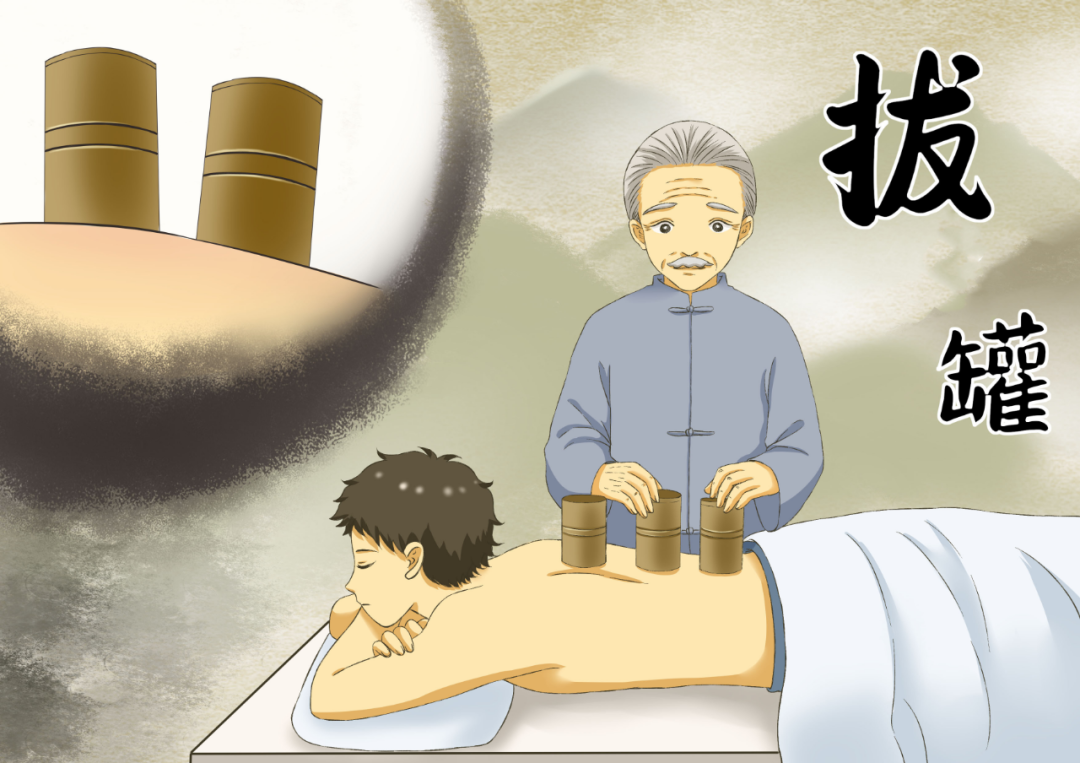
To regulate Liver Qi stagnation, moxibustion combined with cupping is highly effective. The specific acupoints for this treatment are as follows:

1Tai Chong (Liver 3)
Tai Chong is an acupoint on the foot’s Jueyin Liver Meridian, located on the dorsum of the foot, in the depression between the first and second metatarsal bones. Cupping followed by moxibustion at this point can help regulate Qi, soothe the liver, invigorate blood circulation, and promote smooth Qi and blood flow.
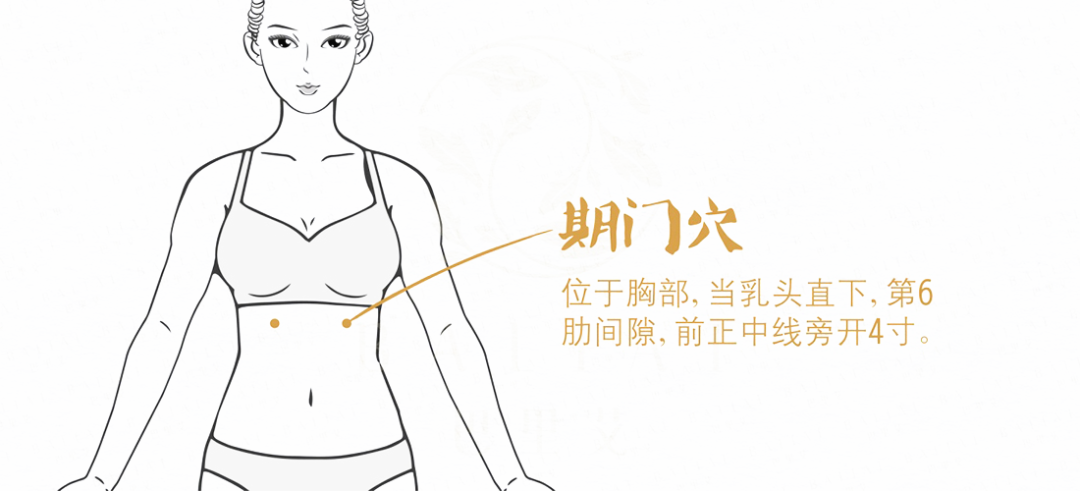
2Qi Men (Liver 14)
Qi Men is the front-mu point of the liver, located in the sixth intercostal space, four inches lateral to the midline (directly below the nipple). Moxibustion at this point can help soothe the liver and strengthen the spleen, regulate Qi, and invigorate blood circulation. Cupping at this point, along with Ganshu (Bladder 18) and Ge Shu (Bladder 17), can also help soothe the liver, invigorate blood, and resolve stasis, primarily treating chest and rib pain. Rubbing the sides of the ribs with both hands can also help soothe the liver and relieve stagnation.
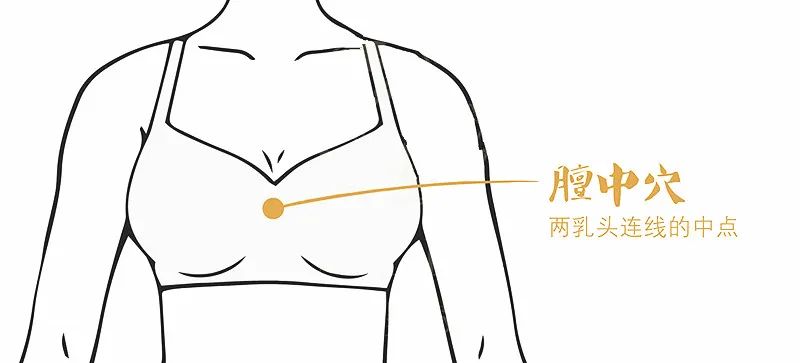
3Shan Zhong (Ren 17)
Located at the level of the fourth intercostal space, on the midline (between the nipples). Cupping at this point can invigorate blood circulation, open the chest, regulate Qi, and relieve cough and asthma. Even massaging this point can yield good results, alleviating chest tightness, cough, and vomiting. Cupping at these acupoints should be done for 5-10 minutes if there are no significant discomforts.
Generally, a course of treatment consists of about 10 sessions, with cupping done every 5 days and moxibustion every other day. The color of the cupping marks reflects individual constitution and health status:
Dark purple marks indicate blood stasis;
Dark red marks indicate heat and more severe conditions;
Pale, slightly swollen marks with moisture indicate spleen yang deficiency leading to water retention;
Marks with clear patterns and enlarged pores indicate wind and dampness.
During cupping, one may feel local tightness, coolness, or swelling; if there is no significant discomfort, the cupping marks will naturally fade within 3-5 days without special treatment.
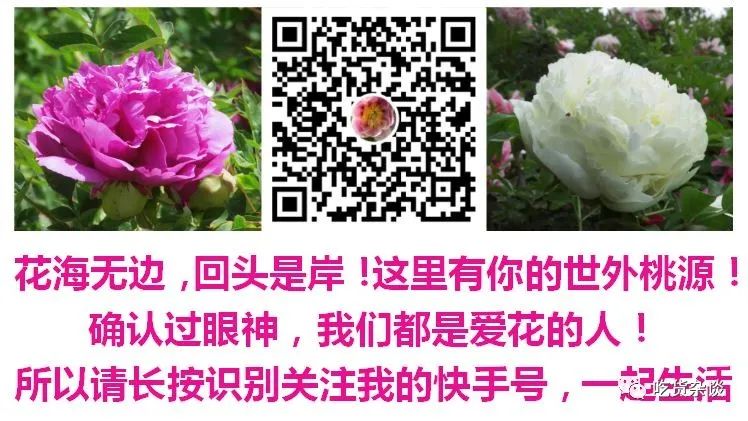
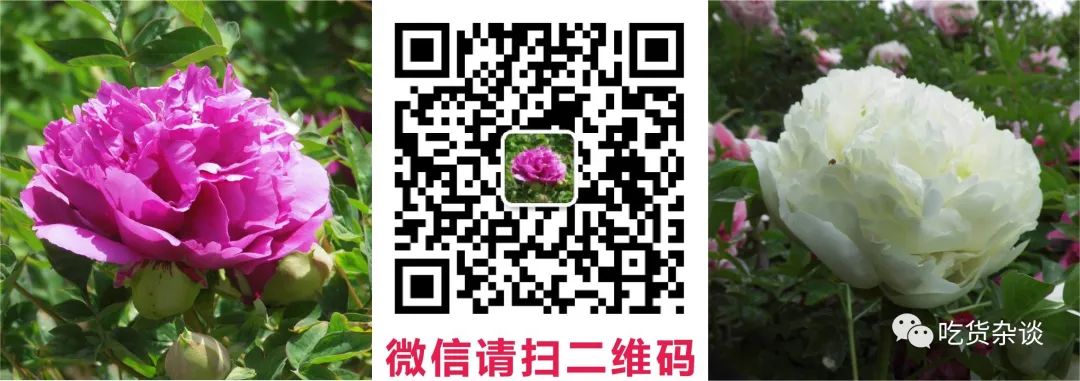
↓↓↓ Scan the QR code to try it out ↓↓↓

